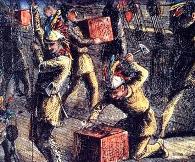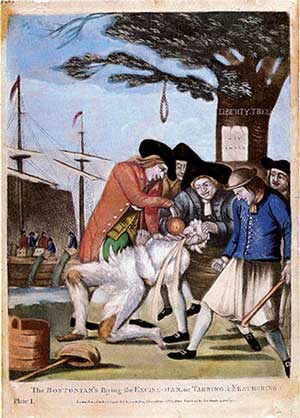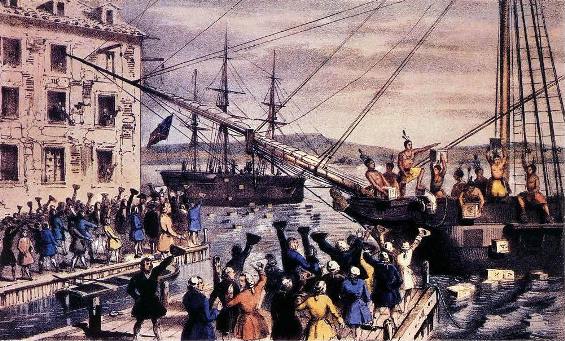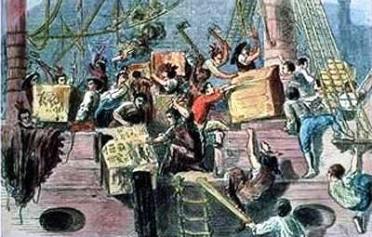3.
Pretend you were
a young person standing in the excited crowd on the
wharf. It is now evening, and by candle light in your
room, you are writing a letter to your cousin.
Write the letter now, and in the letter describe what
you saw at the docks that day, and explain who the
people were wearing feathers in their hair.
Explain also what they were throwing into the harbour
and what motivated them to do this. Try and make your
letter look like it was really written in the1700s.
These Sources will
show you the style of writing that was common at the
time.
The document on the right is a Boston handbill published
on 2 December 1773 and signed 'The People'. It states
the possible outcome of any tea being landed in Boston
and preceded the Boston Tea Party. The handbill was sent
to Britain from the American colonies by Governor Thomas
Hutchinson.
This document below
is an extract from an account of the Boston Tea Party
that was published in the
Massachusetts Gazette and Boston Weekly
Newsletter. |
Whereas it
has been reported that a permit will be given by
the Custom house for landing the tea now on
board a vessel laying in this harbor, commanded
by Captain Hall: this is to remind the public
that it was solemnly voted by the body of the
people of this and the neighboring towns
assembled at the Old South meeting-house on
Tuesday the 30th day of November, that the said
tea never should be landed in this province, or
pay one farthing of duty.
And as the aiding or assisting in procuring or
granting any such permit for landing the said
tea, or any other tea o circumstanced, or in
offering any permit, when obtained, to the
master or commander of the said ship, or any
other ship in the same situation, must betray an
inhuman thirst for blood, and will also in a
great measure accelerate confusion and civil
war; this is to assure such public enemies of
this country that they will be considered and
treated as wretches unworthy to live, and will
be made the first victims of our just
resentment. |
|
|
 |
|





